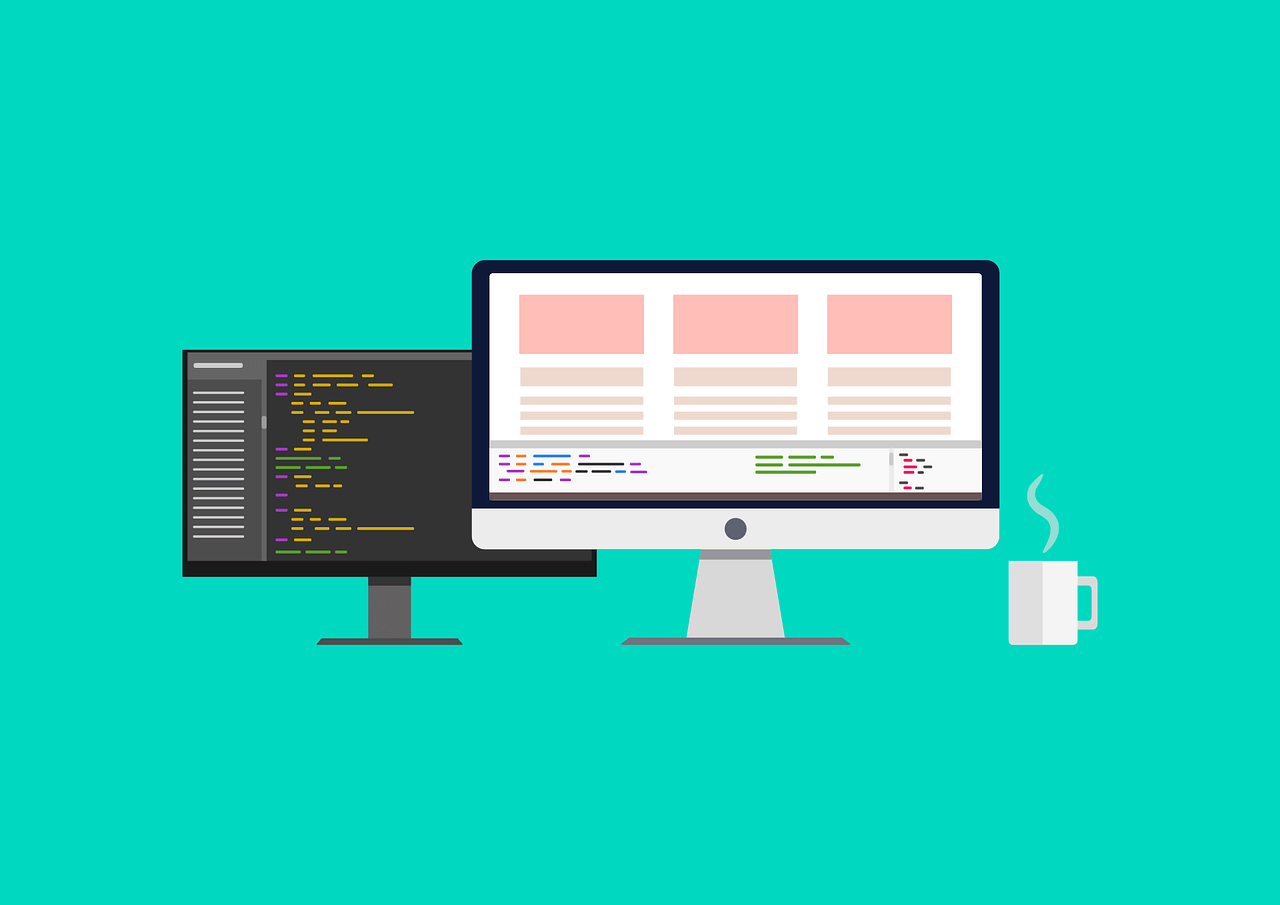Webhooks are a way for applications to communicate in real time, without requiring constant checks or manual updates. Instead of polling an API repeatedly to see if something has changed, webhooks allow a platform to automatically send an HTTP request to a user-defined endpoint the moment an event occurs. This makes systems more efficient, faster, and scalable. For example, when a new commit is pushed to a repository on GitHub, a webhook can instantly notify a CI/CD pipeline to start testing and deploying the code.
They matter because many modern APIs depend on event-driven communication to deliver seamless user experiences. Payment providers like Stripe rely on webhooks to inform businesses immediately about successful or failed transactions, enabling instant responses such as sending receipts, updating order statuses, or triggering fraud checks. By eliminating delays and manual checks, webhooks empower developers to build more responsive, automated, and reliable integrations between services.
Understanding Webhooks and Event-Driven APIs
Webhooks allow applications to share information in real time. Instead of one system repeatedly asking another for updates, the source system pushes data to the destination the moment an event occurs. This makes them faster, lighter, and more reliable than traditional methods. They are widely used today because they save resources and create smoother user experiences.
Webhooks vs Polling: Why Webhooks Are Better
- Polling → The client keeps asking the server if anything has changed. This wastes resources, creates delays, and produces unnecessary traffic.
- Webhooks → The server sends information only when an event occurs. This approach is immediate, efficient, and more scalable for modern systems.
How Webhooks Work in Real-Time Applications
- An event occurs → for example, a payment is completed or code is pushed.
- A trigger fires → the system identifies that an important action has taken place.
- An HTTP POST request is sent → this request is delivered to the user’s chosen endpoint.
- A payload is included → usually in JSON format with details about the event.
- The receiving application acts → such as updating a database or starting a workflow.
Common Webhook Use Cases
- Payments → platforms like Stripe or PayPal notify merchants instantly about transactions.
- Messaging → Slack or Discord use webhooks to send chat updates in real time.
- CI/CD → GitHub webhooks start testing or deployment pipelines when code changes.
- E-commerce → stores send order confirmations, shipment updates, or delivery alerts.
In short, webhooks replace the old “check repeatedly” model with “notify instantly,” enabling real-time integrations. They reduce the burden on servers, save bandwidth, and create faster response times for users. This instant communication is what makes services like GitHub, Stripe, and Slack feel seamless and responsive.
For developers, webhooks also simplify automation by connecting different systems without constant manual intervention. They encourage scalability, since applications no longer need to waste resources on unnecessary checks. In many ways, webhooks form the backbone of today’s event-driven architecture, powering the smooth digital experiences people now expect.
Key Components of a Webhook System
To build or understand a webhook system, it is important to recognise the core components that make it work. Each piece plays a role in ensuring data is sent, received, and acted upon reliably. Together, these parts form the backbone of event-driven communication between applications. They ensure that events are captured at the right moment and delivered without unnecessary delay. By combining these components, developers can create integrations that are not only fast but also secure and highly scalable.
1. Webhook Event Source
- The event source is the platform or API that generates the webhook.
- It is the system where something important happens, such as a payment being processed, code being pushed, or a user joining a channel.
- The event source is responsible for detecting the event and preparing a notification that will be sent out.
- It often allows developers to select which events should trigger webhooks, offering flexibility and control.
2. Webhook Subscriber or Endpoint
- The subscriber is the receiving application or service that wants to know when events occur.
- It provides an endpoint, which is simply a URL designed to accept incoming data.
- This endpoint listens for the webhook request and processes the information, triggering actions such as updates, notifications, or database changes.
- Subscribers can register multiple endpoints to handle different types of events for more complex workflows.
3. Webhook Payload Structure
- The payload is the actual data that travels with the webhook request.
- It is most often formatted in JSON and contains details about the event, such as transaction amounts, commit messages, or user IDs.
- A consistent and predictable payload structure makes it easier for developers to handle events and maintain integrations.
- Payloads may also include metadata like timestamps or signatures for security and debugging purposes.
4. Webhook Delivery Mechanism
- Webhooks are delivered through HTTP POST requests sent from the event source to the subscriber’s endpoint.
- This method ensures data is transmitted securely and efficiently.
- Proper delivery also involves handling retries, ensuring failed requests can be attempted again until successful.
- Delivery systems may include logging and monitoring to track success rates and diagnose issues quickly.
Together, these components create a reliable system where information flows instantly between services, powering real-time functionality in modern applications.
Building Your Own Webhook API Step by Step
Designing a webhook API involves creating a system that can capture events, prepare data, and deliver it to client applications in a reliable and secure way. Each step contributes to making the integration predictable and developer-friendly.
Define Events
- The first step is to identify which events should trigger webhooks.
- These events may include payments being completed, files being uploaded, or new users registering.
- Clearly defining events ensures that clients know exactly what information will be sent and when.
- Offering selective event subscriptions gives users control over what they want to receive.
Register Endpoints
- Clients need a way to provide their own callback URLs where data should be delivered.
- The API should allow easy registration and management of these endpoints.
- Verification, such as sending a test request, can confirm that endpoints are valid.
- Supporting multiple endpoints enables more complex workflows and integrations.
Structure Payloads
- Payloads carry the event data, often in JSON format.
- Consistency is key, so the structure should remain predictable across events.
- Including metadata such as event IDs and timestamps helps with debugging and tracking.
- Documentation of the payload schema makes integration easier for developers.
Deliver Requests Reliably
- Webhooks are sent as HTTP POST requests to registered endpoints.
- Delivery must account for failures caused by timeouts or server errors.
- Retry strategies, such as exponential backoff, improve reliability.
- Dead-letter queues can handle undeliverable messages for later review.
By following these steps, developers can build webhook APIs that are efficient, secure, and scalable, offering real-time communication that modern applications depend on.
Webhook Security Best Practices
Keeping webhooks secure is essential because they involve data moving between different systems across the internet. Without proper safeguards, attackers could intercept, forge, or misuse webhook requests. The following best practices strengthen reliability and protect sensitive information.
Verify Webhook Authenticity
- Use shared secrets → Include a secret token or HMAC signature with every request.
- Server-side validation → Recalculate the signature on the receiving end and compare it.
- Purpose → Ensures the webhook truly came from the expected source and not an attacker.
- Benefit → Blocks forged requests and prevents unauthorised access.
Use HTTPS for Webhooks
- Encrypted traffic → Always deliver webhooks over HTTPS instead of plain HTTP.
- Protection → Prevents eavesdropping and man-in-the-middle attacks.
- Trust → Builds confidence that data cannot be altered during delivery.
- Standard → Modern platforms like Stripe and GitHub enforce HTTPS by default.
Prevent Webhook Replay Attacks
- Include event IDs → Every payload should carry a unique identifier.
- Add timestamps → Expired or duplicate requests can be rejected.
- Apply rate limits → Stop attackers from flooding endpoints with repeated calls.
- Result → Protects systems from malicious replays and duplicate processing.
Log and Monitor
- Track webhook activity → Keep detailed logs of all incoming requests.
- Spot anomalies → Monitor for unusual patterns or repeated failures.
- Debug easily → Logs provide visibility into request timing and payloads.
- Security boost → Helps detect potential abuse early and respond quickly.
By combining authenticity checks, encryption, replay prevention, and monitoring, webhook security remains strong, protecting both data and user trust. These practices not only safeguard communication but also reduce downtime and operational risks. Ultimately, a secure webhook system builds confidence for developers and businesses, ensuring that integrations run smoothly and consistently over time.
Testing and Debugging Webhooks
Even the most carefully designed webhook system can fail if it is not thoroughly tested. Testing ensures that webhooks behave as expected under different scenarios, helping developers catch errors before they impact real users. Debugging tools, simulations, and monitoring play a critical role in validating the workflow. Regular testing also builds confidence that the system is resilient to failures, network issues, or unexpected payloads.
Use Debugging Tools
- ngrok → Creates secure tunnels to expose local servers for webhook testing.
- RequestBin → Captures incoming requests for payload inspection.
- Postman → Simulates webhook events and validates endpoints.
- Local server logs → Developers can inspect live requests directly on their servers to ensure proper handling.
Simulate Events
- Developers can mimic real-world scenarios by triggering test events.
- Helps confirm endpoint responses, payload structure, and retry behaviour.
- Useful for identifying inconsistencies before deploying to production.
- Enables load testing by sending multiple simultaneous events to check performance under stress.
Monitor Failed Deliveries
- Log every failure with details of the event ID and timestamp.
- Provide a dashboard for developers to inspect missed events.
- Ensures visibility, accountability, and faster debugging.
- Track patterns in failures to proactively prevent recurring issues.
Testing and debugging are not one-time steps but continuous practices that improve system reliability. By investing in proper testing, developers reduce downtime, prevent errors from reaching production, and ensure webhooks deliver information accurately and consistently over time. These practices ultimately make integrations more robust and trustworthy.
Real-World Webhook Examples
Webhooks are everywhere, powering many of the world’s most widely used platforms. They enable real-time communication between systems and automate workflows that would otherwise require constant manual intervention. By delivering instant notifications and updates, webhooks improve efficiency, reduce errors, and enhance user experience. Their practical applications showcase why they are central to modern software architecture and critical for event-driven systems.
GitHub
- Sends push events → triggers CI/CD pipelines automatically.
- Developers get instant updates → see code changes in real time.
- Keeps version control integrated → works seamlessly with automation tools.
- Supports issue and pull request notifications → helps teams respond faster.
Stripe
- Notifies merchants → alerts them of successful or failed payments.
- Enables instant order fulfilment → automates downstream processes.
- Reduces friction in financial transactions → improves customer experience.
- Sends subscription updates → keeps recurring billing transparent and timely.
Slack
- Uses incoming and outgoing webhooks → enables automated communication.
- Allows apps to post messages into channels → improves collaboration.
- Integrates third-party workflows → connects tools directly into chat.
- Sends alert notifications → keeps teams informed about critical events instantly.
These examples highlight how webhooks fuel critical workflows across industries. They demonstrate the versatility of webhooks, showing how event-driven architecture can automate processes, maintain efficiency, and provide timely updates across diverse systems. Properly implemented webhooks make integrations more seamless, scalable, and reliable, proving essential for modern application development.
Best Practices for Developers Using Webhooks
Building a reliable webhook system requires more than just basic functionality. Developers must focus on robustness, scalability, and usability to ensure that webhooks deliver consistent, accurate, and timely data. Thoughtful design and proper practices reduce errors, enhance developer experience, and maintain trust in the integration ecosystem. By implementing best practices, teams can avoid common pitfalls and make their webhooks a dependable tool for clients and partners.
Idempotency
- Ensure duplicate events don’t trigger duplicate actions → prevents inconsistent system states.
- Use unique event IDs and check before processing → ensures reliability.
- Guarantees reliability in case of retries → especially when endpoints fail temporarily.
- Maintain consistent logging → helps track processed events and avoid accidental duplication.
Clear Documentation
- Provide consumers with detailed payload schemas → so developers know exactly what to expect.
- Explain response codes, retry behaviour, and security measures → avoids confusion and errors.
- Reduces integration errors and confusion → makes onboarding easier for new clients.
- Include examples and sample requests → helps developers test integrations quickly.
Versioning Payloads
- Maintain backward compatibility when data structures change → prevents breaking older integrations.
- Introduce new versions without breaking older integrations → supports long-term system evolution.
- Helps large ecosystems evolve smoothly → allows developers to adapt gradually.
- Communicate changes proactively → ensures consumers are aware of new versions and modifications.
Webhook Management Dashboards
- Give consumers control over subscription settings → enables customization of events they receive.
- Allow testing, replaying events, and viewing logs → improves confidence in integrations.
- Enhances transparency and improves developer experience → reduces support queries.
- Provide notification for failed deliveries → allows timely action and debugging.
By following these practices, developers ensure that webhooks remain efficient, secure, and user-friendly. Strong implementation improves reliability, reduces operational issues, and provides a seamless real-time experience for clients and end users alike.
Common Webhook Pitfalls to Avoid
Even though webhooks seem straightforward, many implementations fail because developers overlook important details. Small mistakes can cause missed events, duplicated actions, or system downtime. Understanding common pitfalls and addressing them proactively saves time, reduces errors, and ensures a smoother experience for clients. By being aware of these challenges, developers can build webhook systems that are more reliable, predictable, and scalable.
Not Handling Retries
- Ignoring retries → risks data loss when endpoints fail temporarily.
- Always implement retry logic → ensures delivery guarantees.
- Use exponential backoff → prevents overwhelming endpoints during repeated failures.
- Track failed attempts → allows developers to review and address persistent delivery issues.
Overloading Clients
- Sending every possible event → overwhelms consumers.
- Allow filtering → so clients only receive relevant events.
- Group events when possible → reduces request volume and improves efficiency.
- Provide subscription management → lets clients opt in or out of specific event types.
Poor Documentation
- Without proper guidance → consumers struggle to integrate.
- Leads to inconsistent implementations → increases support requests.
- Include examples and payload samples → helps developers test their endpoints.
- Maintain clear version history → ensures clients can adapt to changes without breaking integrations.
By proactively addressing these pitfalls, developers can create webhook systems that are robust, efficient, and user-friendly. Proper handling of retries, thoughtful event management, and thorough documentation collectively reduce errors, improve reliability, and enhance the overall developer experience. Ultimately, avoiding these mistakes ensures that webhook integrations run smoothly and deliver value consistently.
Conclusion
Webhooks may seem simple at first glance, but they are among the most powerful tools in modern software architecture. By enabling real-time, event-driven communication, they make systems faster, more connected, and more efficient. Platforms such as GitHub, Stripe, and Slack clearly demonstrate how webhooks transform workflows, automate critical processes, and reduce manual intervention.
Achieving success with webhooks, however, requires careful planning and thoughtful implementation. Secure authentication, rigorous testing strategies, detailed developer-friendly documentation, and robust retry mechanisms are all essential components. When these elements are in place, webhooks not only transmit data reliably but also build trust between systems and users.
When implemented thoughtfully, webhooks eliminate inefficiencies, strengthen integrations, and provide the instant responsiveness that modern users now expect. They allow applications to react immediately to changes, streamline operations, and maintain consistency across complex systems.
For developers creating APIs today, mastering webhooks is no longer optional — it is a fundamental skill that underpins the next generation of event-driven applications. Investing time in learning best practices ensures that integrations remain robust, scalable, and adaptable, providing long-term reliability and value for both developers and end users.




